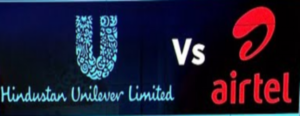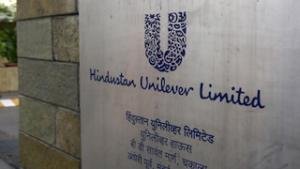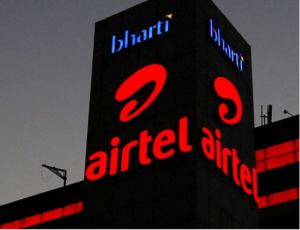In the ever-evolving landscape of the Indian market, the trajectories of two corporate giants, Hindustan Unilever Limited (HUL) and Bharti Airtel, have captured the attention of investors. A recent in-depth analysis by Jefferies explores the market dynamics of these two behemoths, revealing a compelling narrative of contrasting paths and emerging opportunities for prospective investors.
Over the past decade, both HUL and Bharti Airtel have achieved similar market capitalization, yet their journeys have been markedly divergent. Bharti Airtel grappled with challenges such as adverse regulatory environments and intensifying competition until 2019. Meanwhile, HUL experienced a surge in margin-led earnings growth, propelling its market capitalization to three times that of Bharti Airtel at one point.

However, the winds of change are palpable. With the telecom sector moving towards a duopoly, Bharti Airtel is gaining momentum, while HUL faces a complex scenario concerning growth and valuations. Jefferies recommends Bharti Airtel over HUL, emphasizing the telecom giant’s advantageous position in the evolving market.
Both companies are deeply ingrained in the Indian consumption story, yet Bharti Airtel distinguishes itself with a forecasted nearly twice the revenue growth (approximately 15%) compared to HUL from FY23-26E. This anticipated growth is mirrored in EBITDA, with Bharti Airtel projected to outperform HUL significantly, boasting a 20% Compound Annual Growth Rate (CAGR) versus HUL’s 9% CAGR.
Jefferies predicts that balance sheet deleveraging will further amplify the impact, projecting over 50% CAGR in Earnings Per Share (EPS) for Bharti Airtel compared to HUL. HUL’s EPS growth is anticipated to follow the EBITDA trend. Consequently, Bharti Airtel is expected to generate three times higher Free Cash Flow.
In terms of market presence, HUL maintains its undisputed position as the Fast-Moving Consumer Goods (FMCG) market leader across most categories, commanding a third of the market share in its operational segments. On the flip side, Bharti Airtel, with over 70% of its revenues stemming from India and the remainder from Africa, sustains a near-similar overall market share of around 35%. Bharti Airtel’s broadband and Direct-to-Home (DTH) segments slightly fall below the company level, while its mobile segment boasts a slightly higher market share.
The Jefferies report concludes that the shift in market dynamics positions Bharti Airtel as a more promising investment opportunity, capitalizing on the evolving landscape of the Indian market. Investors are encouraged to incorporate this analysis into their decision-making process as these two giants navigate the intricate realms of Indian business.
As investors ponder over the compelling insights provided by Jefferies, it’s essential to delve deeper into the nuanced factors shaping the destinies of HUL and Bharti Airtel. The contrasting trajectories of these companies, marked by challenges and triumphs, underscore the dynamism inherent in the Indian business ecosystem.
Bharti Airtel’s resilience in overcoming regulatory hurdles and fierce competition until 2019 showcases the company’s adaptability and strategic prowess. This resilience has positioned Bharti Airtel at the forefront of the telecom sector, especially as the industry undergoes a transformative shift towards a duopoly. In contrast, HUL’s journey has been characterized by margin-led earnings growth, elevating its market capitalization to impressive heights.


However, the tides are turning, and Bharti Airtel’s resurgence is evident. The forecasted revenue growth of nearly 15% from FY23-26E signals a robust trajectory for the telecom giant. This growth extends to EBITDA, where Bharti Airtel’s anticipated 20% CAGR outshines HUL’s 9% CAGR. Jefferies’ insightful analysis further anticipates a substantial impact on Bharti Airtel’s EPS, with a projected 50% CAGR, highlighting the company’s potential for significant returns.
The dynamics of balance sheet deleveraging play a pivotal role in amplifying Bharti Airtel’s financial strength. The projected three times higher Free Cash Flow underscores the company’s capacity for strategic investments and sustainable growth. This financial robustness positions Bharti Airtel as a compelling choice for investors seeking not only growth but also a resilient financial foundation.
Examining market presence, HUL’s undisputed leadership in the FMCG sector signifies its stronghold in consumer goods. The company’s ability to command a third of the market share in its operational segments reflects a robust market position. On the other hand, Bharti Airtel, operating with over 70% of its revenues in India and the remainder in Africa, maintains a commendable overall market share of around 35%.
Diving deeper, Bharti Airtel’s segment-wise market presence reveals a nuanced picture. While its broadband and DTH segments slightly fall below the company level, its mobile segment enjoys a slightly higher market share. This diverse yet balanced market presence positions Bharti Airtel strategically, allowing it to capitalize on the multifaceted nature of the telecom industry.
In conclusion, Jefferies’ comprehensive analysis provides investors with valuable insights into the evolving dynamics of HUL and Bharti Airtel. As these corporate giants navigate the intricate realms of Indian business, Bharti Airtel emerges as a more promising investment opportunity, leveraging its advantageous position in a shifting market. Investors are advised to carefully consider these factors in their decision-making process, recognizing the potential for robust returns in the evolving landscape of the Indian business arena.
Disclaimer: The content provided is for informational purposes only. It does not constitute financial advice, and readers are advised to conduct their research and consult with a financial advisor before making any investment decisions. The author and platform are not responsible for the accuracy or completeness of the information provided, and investments carry



